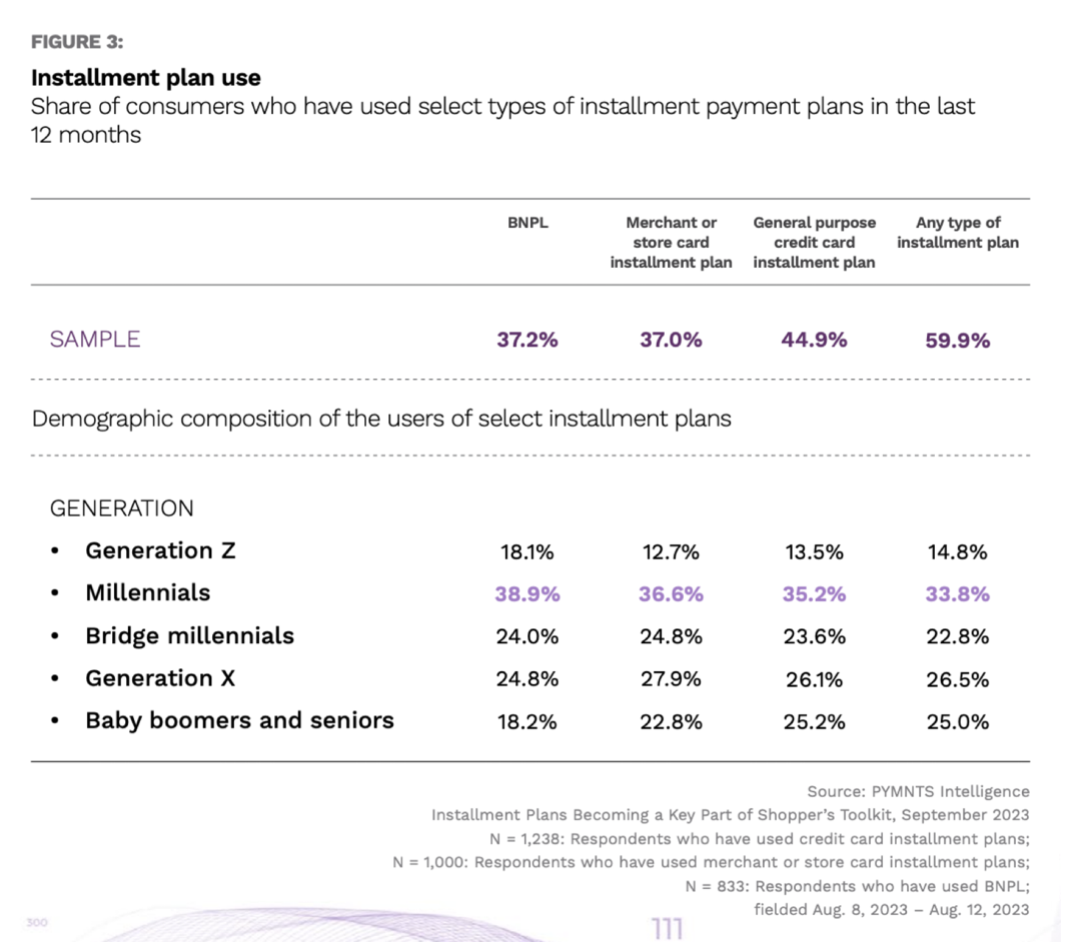Millennials Fuel Split-Pay Retail Purchases on Black Friday and Beyond

As we enter the holiday season, consumers are finding ways to manage their finances.
The advent of split payments and other flexible spending programs is enabling shoppers to spend while not breaking their banks. As PYMNTS Intelligence has found, holiday shoppers who use a deferred payment method spent nearly $150 more than those who don’t.
The adoption of installment plans for retail products has been widespread across generations, allowing consumers of all ages to either access products they could not afford otherwise, or better manage their cash. Whether consumers want to opt for credit cards, buy now, pay later (BNPL), or merchants’ credit options may vary significantly across demographics.
The report, “Installment Plans Becoming a Key Part of Shopper’s Toolkit,” is a PYMNTS Intelligence study conducted in collaboration with Splitit that examines how consumers use installment plans, whether that’s from merchants, credit cards or BNPL. The study found that consumers in different age groups gravitated more toward certain installment plans, and were divided in their motivations to use one over another.
On average, six out of 10 consumers used some type of pay-later plan to buy retail products in the last 12 months. Millennials are the most likely to use this type of financing option (72% of this group), while baby boomers and seniors, who have a more solvent and less indebted financial situation, are the least likely to use it (46%).
The study found that baby boomers prefer credit card plans in their retail purchases due to its convenience and the low cost of using them, whereas Generation Z consumers prefer to turn to BNPL. On the other hand, all the generations in between (millennials and Generation X) use a mix of providers and solutions.

Baby boomers and seniors who use this financing option tend to spend an average of $1,107 and use it mainly for clothing, groceries and home furnishings. Younger generations, by contrast, are more likely to spend more and use split-pay plans for everyday purchases such as groceries, clothing, health and beauty products, and buy products they could not afford without using them.
On the other hand, millennials and bridge millennials are most likely to use installment plans for less frequent purchases related to the home: furnishings, appliances and electronics, three markets that traditionally perform well during Black Friday.
This Black Friday saw a marked decrease in purchases across all generations except millennials. According to the PYMNTS Intelligence report “Gen Z Sours on Black Friday While Buy Now, Pay Later Sales Surge,” nearly 81% of millennials made at least one purchase on Black Friday, up from 79% the past year.
On average, millennials are turning to split-pay plans for expenses over $2,000, the highest among all generations. As this demographic begins to buy homes, their desire to furnish it may be driving this trend. They typically turn to these plans not only to better manage their spending, but also because they are interested in improving credit scores and earning rewards.

